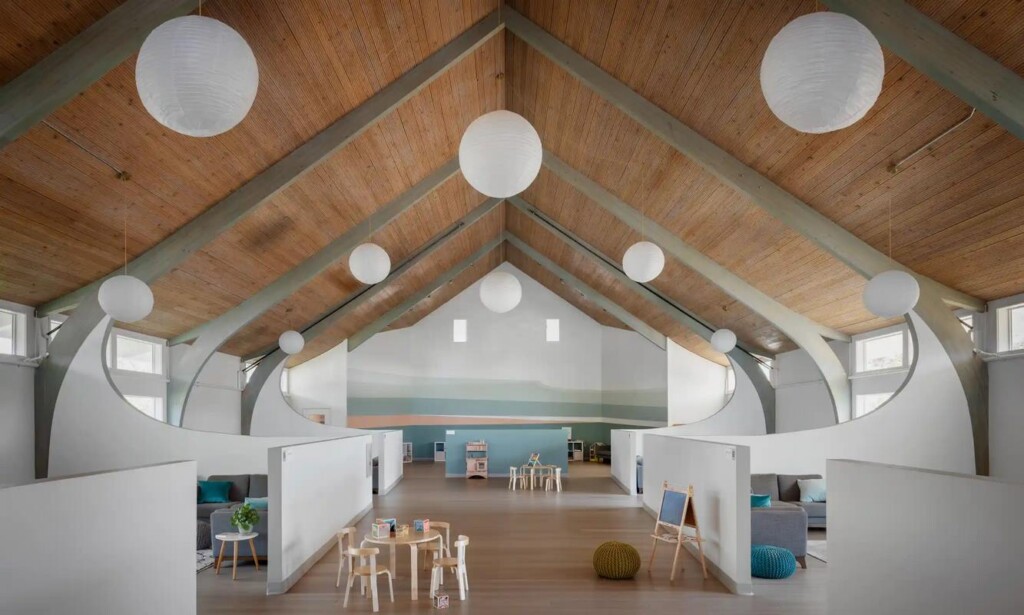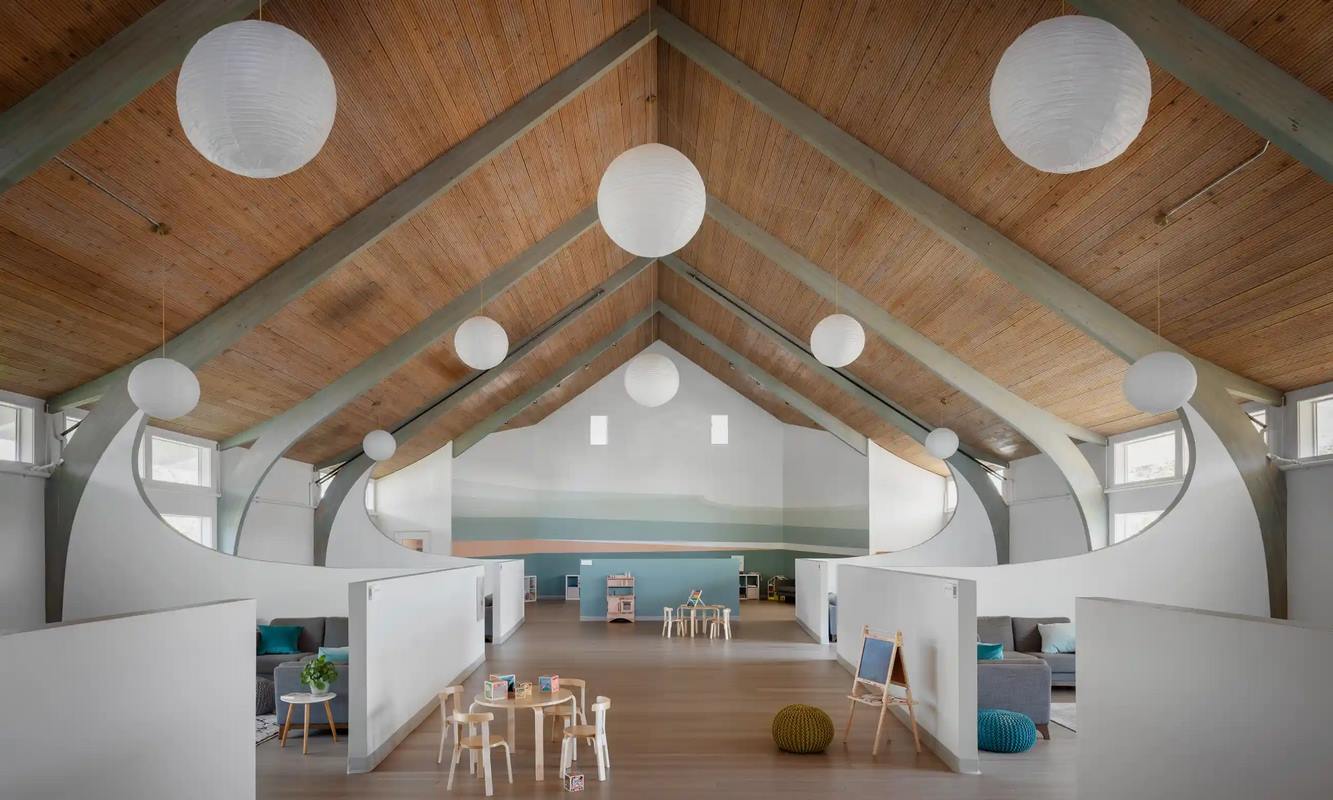
Attempting to get a grip on the homeless epidemic, homeless shelters are making conscious choices to employ trauma-informed designs to make those who are sheltering feel calm, more autonomous, and safe.
For example, at Path Home Family Village in Portland, Oregon, natural bamboo wood roofs sit above a naturally lit area pained in seafoam green, turquoise, and grey. Windows open out onto a garden with flowers and vegetables, and there are privacy walls between beds with soft personal reading lamps.
This is all part of the trauma-informed design; one that uses science and close relations with the homeless to establish a set of best practices for shelter construction.
Path Home used to be three homeless shelters in one—founded in an abandoned warehouse and church basements.
$250,000 of pro-bono work was donated to Family Village from the influential non-profit Design Resources for Homelessness, founded by Jill Pable, a professor at Florida State University.
Pable has consulted for other trauma-informed shelters before—in Georgia for example, and her work shows that aspects like acoustics, color, and furniture arrangement, or rooms specifically constructed for family visits can reinforce the mental states that trauma often clashes with—community, privacy, and a sense of welcome.
Other aspects, such as installing glass doors, ensuring there are enough windows to allow residents to see outside, and open spaces to ensure they don’t feel they can be snuck up on, are important for a sense of security as well.
MORE HOMELESS SHELTER INNOVATION: Tiny Home Village for Salt Lake City‘s Homeless Gets Green Light for 430 Units
“You can come home [to the shelter], you can do what you want, you don’t feel like anyone is looking at you. There’s a sense of relief, privacy, and wholeness,” Pable told The Guardian.
Last year, the shelter hosted 524 families. The average length of stay is 85 days. Recently, a previous resident asked Brandi Tuck, the executive director, if he and his partner could get married there.
That’s as good an indication as any that the principles Path Home was founded upon are working.
SHARE This Inspiring Design News With Your Friends…




















